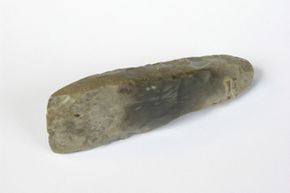Researchers that study humanity's past have developed something of a mission, if not an obsession, with charting the course that humans took from the African cradle of our species. The ideas that shape the debate are often contentious: Did a great many people leave Africa at once and spread out to populate the rest of the world? Did successive waves take place, with different groups going in different directions? Did humans evolve in Africa and then leave or did an ancestral hominid exit and evolve into regional races after becoming separated geographically?
These questions plague researchers of human origin theories. To investigate these questions, science has deployed a wide array of disciplines. Linguists track the evolution of words and languages to chart the course of human development. Geneticists look for evidence of population bottlenecks -- points where the population has dramatically decreased and genetic diversity along with it -- in the genetic codes of modern humans. And anthropologists search out toolkits.
Advertisement
Toolkits are the types of tools used by humans in a given period, to a given culture or in a certain area and style. It's a common description -- and an important one; the Iron, Bronze and Stone Ages all describe the materials people used to make tools. Not only time, but entire cultures, may be marked by toolkits. The mysterious Clovis people of North America are identified by the fluted arrow and spear heads unique to their toolkit.
There is a lot of value in using toolkits to describe, identify, date and track humans. Because they're made of hard materials like stone or metal, tools can withstand the ravages of time. They also tend to illustrate human craftsmanship, since tools like axe heads, arrows and hammers must be honed, sharpened and shaped. While employed as-is rather than shaped by humans, the earliest tools -- the Oldowan toolkit of about 2.6 million years ago -- still show signs of use, like batter marks on hammerstones [source: Smithsonian].
Humans leave behind evidence of their presence in a given place through their tools. By using chemical techniques for dating of the particles found in the soil surrounding the tools or in the tools themselves, anthropologists can also determine the approximate time the tools came to rest at the place they were found.
This is why a 125,000-year-old toolkit recently found in the United Arab Emirates could rewrite human history. We'll explain on the next page.
Advertisement



